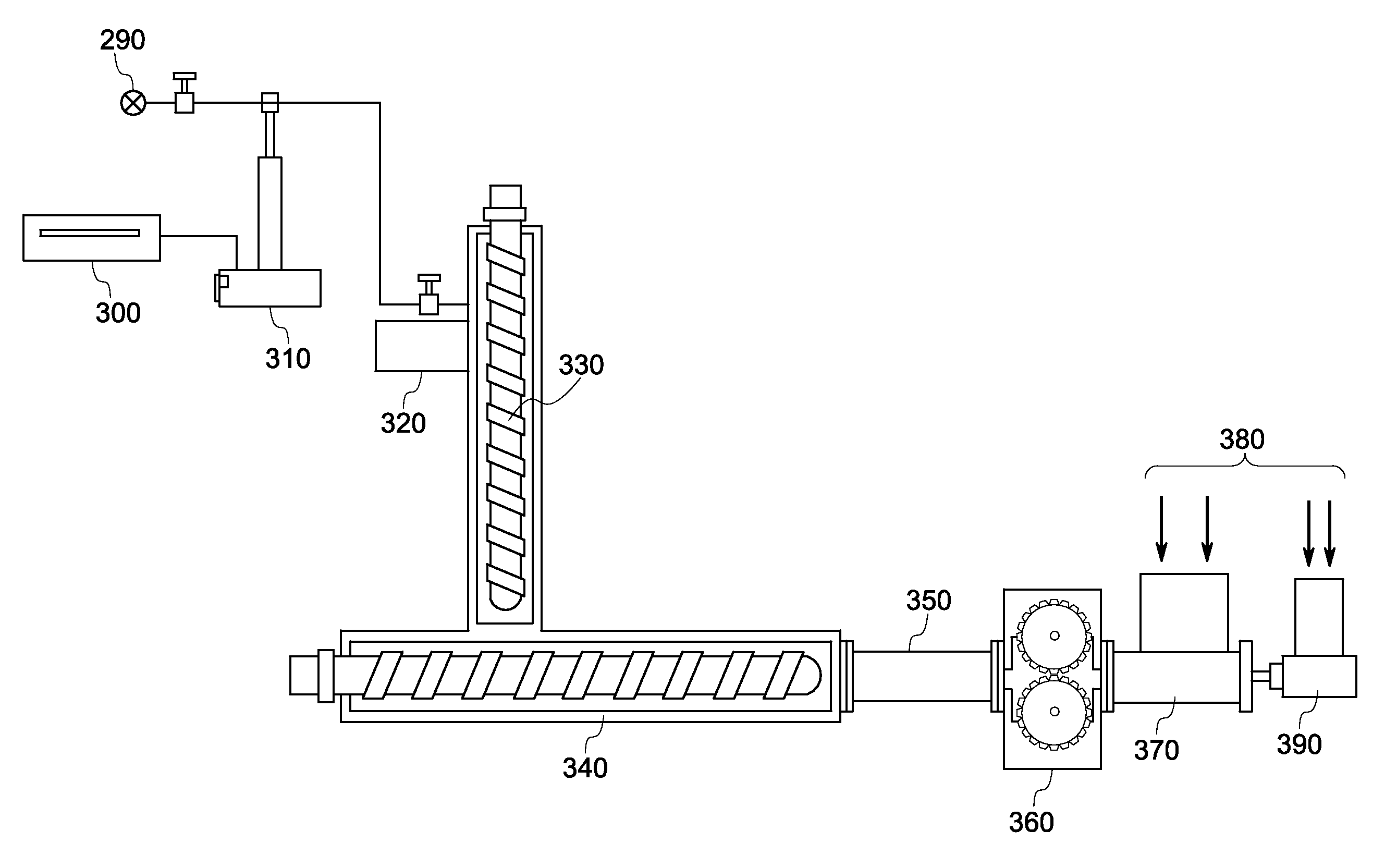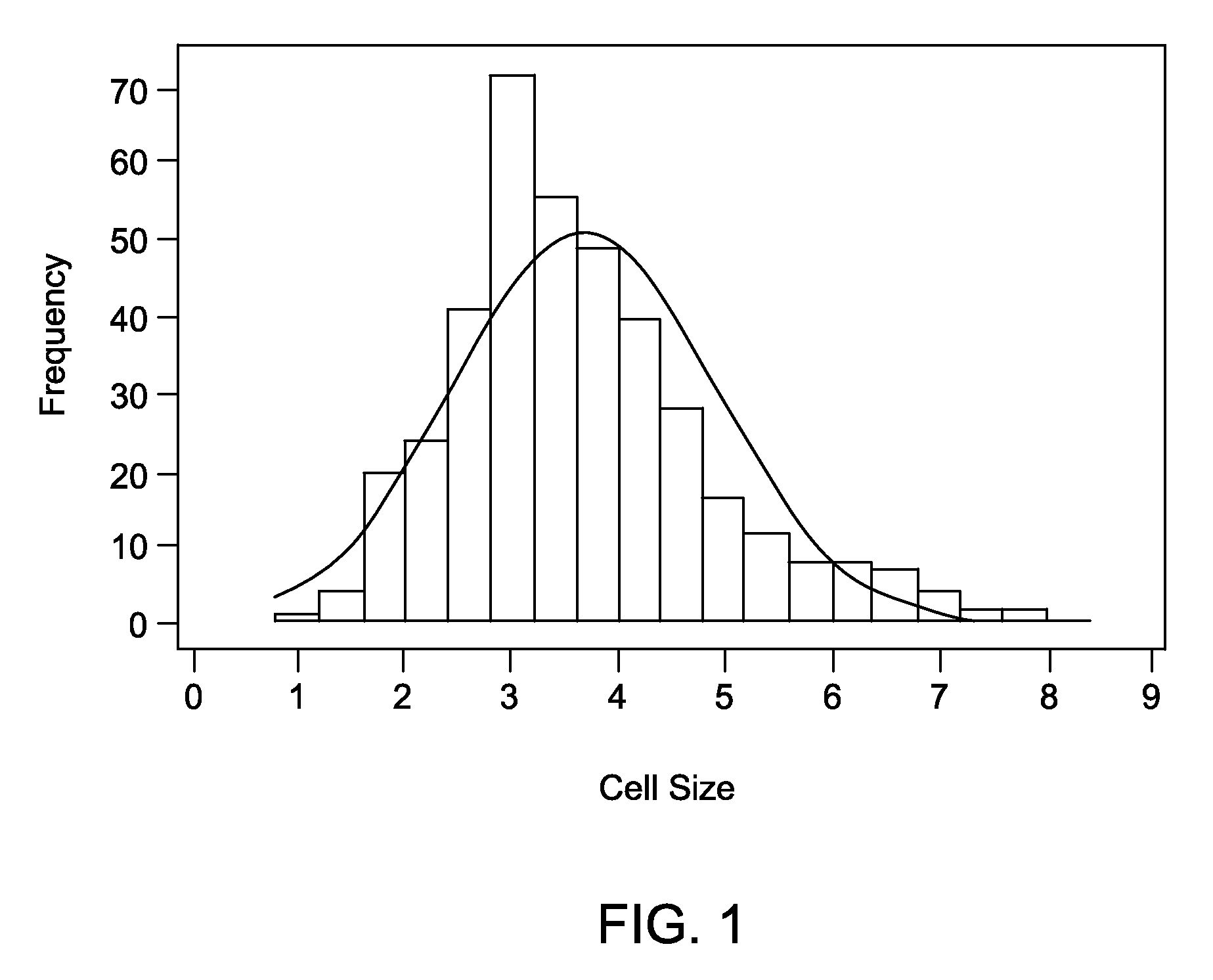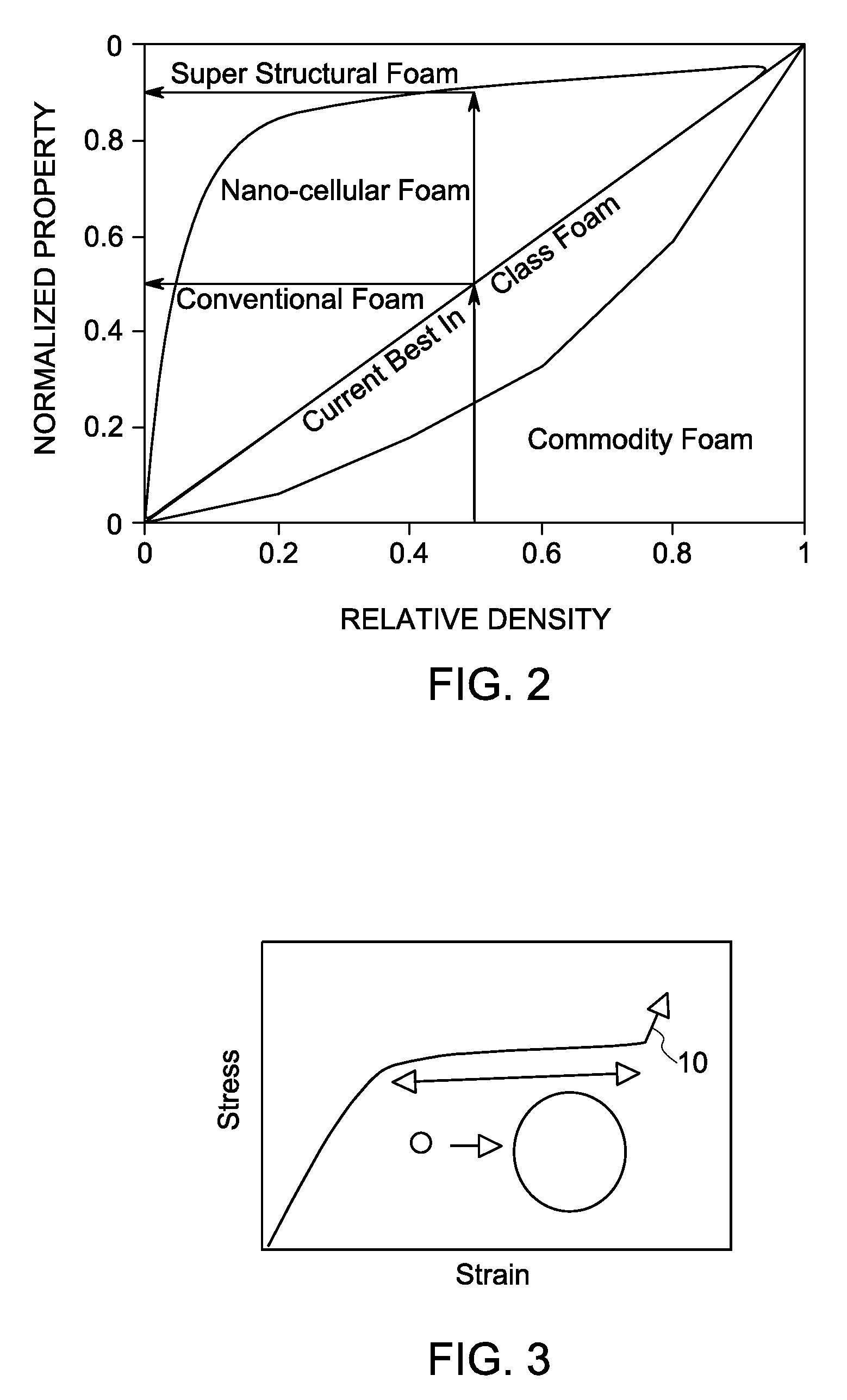Nano-cellular polymer foam and methods for making them
a polymer foam and nano-cellular technology, applied in the field of nano-cellular polymer foams, can solve the problems that the pore morphology of polymeric foams for enhanced properties has not been fully exploited for improving performance, and achieves the effects of improving performance, improving structural, thermal and dielectric properties, and improving performan
- Summary
- Abstract
- Description
- Claims
- Application Information
AI Technical Summary
Benefits of technology
Problems solved by technology
Method used
Image
Examples
example 1
[0068]Equation 4 is plotted for various values of the average pore size for a polymer foam. The plot, shown in FIG. 4 indicates that at a pore size below about 200 nanometers, the gas conduction, which accounts for the bulk of the foam conduction, begins to fall sharply. Thus, as the average pore size of the polymer foam approaches and falls below 200 nanometers, conduction of thermal energy by convection approaches 1×10−6 watt meter−1Kelvin−1, and thereafter begins to drop sharply by orders of magnitude. Such polymer foams are therefore potentially useful as super-insulating nano-cellular polymer foams.
examples 2-7
[0069]These Examples illustrate the relationship between the extinction coefficient and the wavelength for a given pore diameter / foam density set of values for a bisphenol A homopolycarbonate nano-cellular polymer foam. Polymer foam density is given in units of kilograms per cubic meter. The various pore diameters and foam densities for the plots are shown in Table 2. The plots, indicated by reference numerals 20-70, are shown in FIG. 5.
TABLE 2ExamplePlot ReferencePore DiameterFoam density (kilogramsNumberNumber(nanometers)per cubic meter)220800600330800240440500600550500240660300600770300240
[0070]FIG. 5 clearly shows that for a given polymer, engineering the pore diameter (or pore size) and the foam density may be effective in reducing the extinction coefficient, and hence increasing transparency. For example, the plots having reference numerals 30 and 70 show that the polymer foam having a pore diameter of 300 nanometers and a foam density of 240 kilograms per cubic meter has an e...
examples 8-11
[0071]These Examples show the results of simulation calculations of the effect of the average pore size and foam density on optical transparency to visible light (that is, light having wavelength in the range from 380 nanometers to 780 nanometers) of a bisphenol A homopolycarbonate foam having a density of 240 kilograms per cubic meter. The various pore diameters and foam densities for the plots are shown in Table 3.
TABLE 3Example NumberPlot Reference NumberPore Diameter (nanometers)8801009903001010050011110800
It may be seen from FIG. 6 that with decreasing pore size for a given foam density, the percent light transmission increases. Thus for example, the simulation results show that a BPA foam having an average pore size of about 100 nanometers and a foam density of about 240 kilograms per cubic meter may be essentially transparent over the wavelength range from 380 nanometers to 780 nanometers, as seen from plot 80. The bulk density of bisphenol A polycarbonate is about 1200 kgm−3...
PUM
| Property | Measurement | Unit |
|---|---|---|
| pore size | aaaaa | aaaaa |
| particle size | aaaaa | aaaaa |
| temperature | aaaaa | aaaaa |
Abstract
Description
Claims
Application Information
 Login to View More
Login to View More - R&D
- Intellectual Property
- Life Sciences
- Materials
- Tech Scout
- Unparalleled Data Quality
- Higher Quality Content
- 60% Fewer Hallucinations
Browse by: Latest US Patents, China's latest patents, Technical Efficacy Thesaurus, Application Domain, Technology Topic, Popular Technical Reports.
© 2025 PatSnap. All rights reserved.Legal|Privacy policy|Modern Slavery Act Transparency Statement|Sitemap|About US| Contact US: help@patsnap.com



